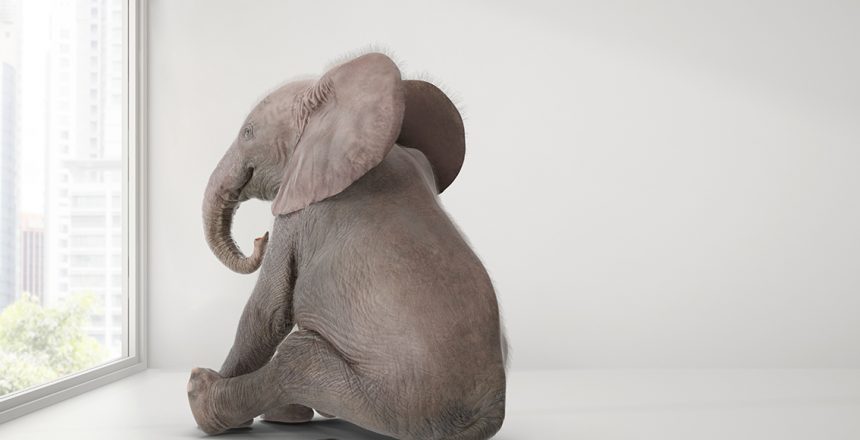One of the most compelling magic tricks is making objects vanish right in front of our eyes. The larger the object, the better. We exclaim in delighted confusion, the magician keeps us in suspense and then, with a flourish, the object is revealed once more.
A magic act can only truly be appreciated if the audience see it for themselves. Hearing about an elephant vanishing from a stage may be interesting, but rarely elicits more than polite nods. We intuitively understand this truth and express it through idioms like ‘seeing is believing’.
We know that the traits that increase the survival of a species have been preferentially selected over hundreds of thousands of years. We understand that this is why we are all hardwired from birth with a series of behavioural and cognitive ‘shortcuts’. One of the most powerful of these pre-preprogrammed, adaptive mechanisms is Absence Blindness.
Absence blindness provides an evolutionary advantage by predisposing us to pay more attention to objects that are visible in our environment than to those that are absent. The downside to our default perception setting, is that it creates absence blindness bias. The bias manifests as our relatively inability to recognize what is not there.
Absence blindness bias is arguably one of the greatest challenges for the specialty of general practice. Because of absence blindness bias, most of the important outcomes from high-quality general practice are invisible. Consider that, when primary care clinicians work to the top of their license, there are fewer referrals to specialist outpatient services, reductions in emergency department attendances and hospital admissions, more rational use of medication and an overall decrease in morbidity and mortality.
All these outcomes are examples of non-events. For practical purposes they are invisible to policy makers, funders, and even some of our hospital colleagues. The tyranny of absence blindness bias predisposes them to only ‘see’ morbidity and mortality figures and the number of referrals and occasions of service that do happen.
The expectation that our stakeholders will one day ‘see’ the value of the specialty of general practice is unrealistic. Even immediate beneficiaries of timely prevention struggle to conceptualize the counterfactual ‘what might have been’ and underestimate the required level of expertise and effort.
This is why simply repeating the story of the disappearing elephant is ineffective. In fact, once it has been shared several times, interest and attention paradoxically decrease and then fizzle out completely. Our stakeholders need to experience and ‘see’ the value for themselves
The problem of invisible work is ubiquitous in society and most industries, including healthcare. While the true prevalence of invisible work is unknown, conservative estimates suggest it is significant and it exacts a staggering toll on human capital.
There are of course moral imperatives to recognize and remediate this issue. However, the reality of absence blindness bias would suggest this is unlikely to spontaneously occur. Instead, those who are doing invisible work must shoulder the responsibility of ensuring their efforts and outputs are clearly visible.
The time has come for general practice to pull our metaphorical rabbits – and elephants – out of our hats.

